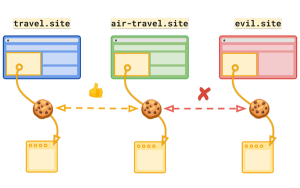All this data we’ve got at our fingertips isn’t useful unless we apply it practically. Contributor Peter Isaacson offers specific steps to help you uncover actionable insights.

When it comes to Account-Based Marketing (ABM) measurement, there’s good news and there’s bad news.
The good news is that we have the ability to measure everything.
The bad news is that we have the ability to measure everything.
Whether it’s information flowing from your website analytics tool or from your customer relationship management (CRM) system, there’s more data at our disposal than ever before. But while having access to a wide set of data is a good thing, it’s also created a big challenge for ABM marketers: How do we navigate all these data sources and effectively measure the success of our efforts?
Fortunately, given the advent of new technologies and resources, approaching ABM measurement has gotten much easier. As you start to think about your own strategy, here are three key steps to guide your efforts.
Step 1: Know where you stand
The first step to being successful with ABM measurement is to set a framework for your measurement. This means understanding what you are comparing against. There are three ways you can go about this:
Compare your performance to benchmarks
Marketers love benchmarks. And when we have solid benchmarks, they are a great way to measure progress. The challenge, though, is that benchmarks often don’t translate from one company to another.
The last three companies in which I’ve led marketing all have very different benchmarks. Different close rates, different opportunity goals, different everything. So benchmarks are nice, but beware of trying to compare your marketing performance to another company’s marketing performance.
Set a baseline of web-and account-based activity
Setting a baseline is a terrific step toward understanding how you are doing. This is all about understanding the positive or negative trends in your business.
Work with your Marketing Operations and web team to answer the following questions about your current performance against your list of target accounts:
- How are your current audiences performing?
- Are target accounts visiting your website?
- What pages are they engaging with?
- What channels are they coming from?
- What content are they engaging with?
- Are they showing signs of intent for your solutions?
- How are your marketing programs impacting revenue?
Compare to another audience
The final type of framework for measurement — and, in some ways, the best for an ABM approach — is to compare the performance of certain audiences or segments to other audiences.
For example, let’s say your target account list is a set of 500 accounts. You can get an understanding of your overall ABM performance by comparing things like funnel conversion rates, funnel velocity and close rates of those target accounts versus another set of “non-target” accounts.
Now you can do a side-by-side analysis, which will help you understand how your ABM activities are performing across the funnel, from awareness and website engagement to pipeline and closed revenue.
You can take this segmentation approach and drill down further to better understand the performance of other audiences and vendors. If your company is taking a blended approach to ABM and tiering your efforts and programs by strategic, mid-level and broader accounts, you can compare your performance across these tiers.
This will help you understand how your strategic accounts are performing in relation to your mid-level or broader accounts. Or you can use control groups to understand vertical performance. Compare two verticals, such as Financial Services and Healthcare, to understand how they perform in relation to one another.
Step 2: Identify patterns and trends
Regardless of how you set your baseline, the next step is to take the data you’ve compiled and parse through it to identify patterns and trends. A helpful way to approach this is to look at your funnel and understand how each one of your audiences is performing at each stage — from awareness and engagement to conversion and closed deals.
You’ll want to ask yourself the following questions:
- How quickly are accounts moving through each of the stages?
- Are accounts getting stuck in any part of the process?
- Are they getting stuck at a particular stage?
- Are target accounts coming to your website?
- Are they engaging with your content?
- Are they converting into deals?
- Can you draw any comparisons from last year’s and this year’s ABM campaigns?
The goal of this step is really to understand the incremental improvements you’re making with each action you take. Are the actions you’re taking moving the needle at each stage of the funnel?
For example, let’s say you’ve just invested in a content recommendation tool with the goal of driving increased account engagement on your website. In this step, you’ll want to see if the results of taking that action are reflected in the numbers.
Are target accounts more engaged on your website? If so, then you might want to invest further in a content recommendation. If not, you can determine what to tweak and where to go next.
Step 3: Take action and provide recommendations for next best steps
Now that you’ve identified areas for growth in your funnel, it’s time to build a plan to address challenges and provide recommendations for next best steps.
For example, let’s say you have an engagement problem. You might be driving a certain percentage of target accounts to your website, but your bounce rate is high. Using this insight, you can make recommendations for a website personalization tool or work with your web team to load high-value content directly on your home page.
Or let’s say you have a late-stage funnel issue where your target accounts are coming to your website and engaging with your products but aren’t converting into the pipeline and into closed deals. In this case, it might make sense to huddle with your sales team to understand why accounts are getting stuck or invest in sales-specific technology that can deliver the insights your sales reps need to accelerate conversion rates.
Out of all the steps we’ve covered, Step 3 is perhaps the most vital to your entire measurement strategy. But it’s important to remember that the process doesn’t end there. As you recommend and take actions based on data, you’ll need to go back and repeat the steps above and continue to iterate and make changes to your ABM programs.
Conclusion
ABM is all about quality, not quantity. While it’s easy to be dazzled by the sheer amount of data at your fingertips, that data isn’t useful if you can’t draw conclusions and make smart recommendations for future actions.
To see lasting success with ABM, you’ll need to continually evaluate and fine-tune your strategy. The good news? All of this is well within reach.
Opinions expressed in this article are those of the guest author and not necessarily Marketing Land. Staff authors are listed here.
Marketing Land – Internet Marketing News, Strategies & Tips
(78)
Report Post







